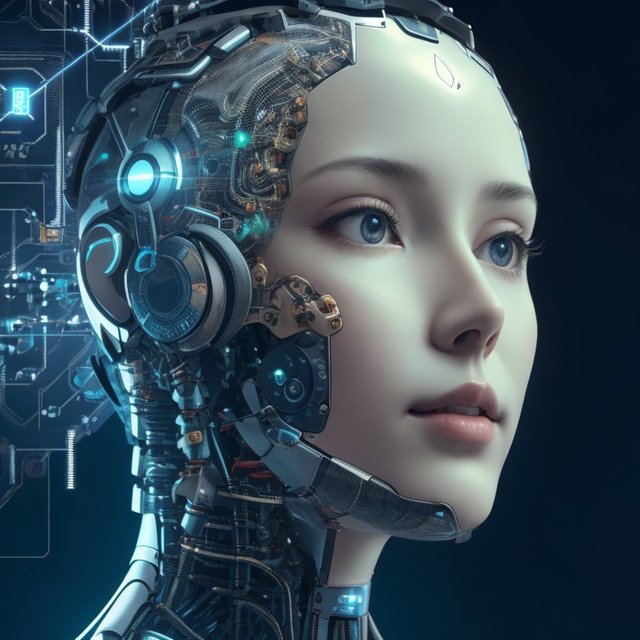Artificial intelligence (AI) and machine self-learning are two terms that are often used interchangeably, but they have different meanings. AI is a broad term that refers to any system that can mimic human intelligence. Machine self-learning is a subset of AI that refers to systems that can learn and improve without being explicitly programmed.
Machine self-learning systems are typically trained on large amounts of data. The data can be anything from images to text to sensor data. The system then uses the data to learn how to perform a task. For example, a machine self-learning system could be trained to recognize objects in images or to translate languages.
There are many different types of machine self-learning systems. Some of the most common types include:
Supervised learning: In supervised learning, the system is given labeled data. The labels tell the system what the correct output should be for each input. For example, a supervised learning system could be given a set of images of cats and dogs, with each image labeled as either a cat or a dog. The system would then learn to identify cats and dogs in new images.
Unsupervised learning: In unsupervised learning, the system is not given labeled data. The system must learn to find patterns in the data on its own. For example, an unsupervised learning system could be given a set of images of different objects. The system would then learn to cluster the images into groups based on their similarities.
Reinforcement learning: In reinforcement learning, the system is given rewards and punishments for its actions. The system learns to perform actions that are rewarded and avoid actions that are punished. For example, a reinforcement learning system could be given a reward for picking up a ball and a punishment for dropping it. The system would then learn to pick up the ball and keep it in its possession.
Machine self-learning systems are becoming increasingly powerful and are being used in a wide variety of applications. Some of the most common applications include:
Image recognition: Machine self-learning systems are used to recognize objects in images. This is used in applications such as facial recognition, object detection, and self-driving cars.
Natural language processing: Machine self-learning systems are used to process and understand natural language. This is used in applications such as machine translation, chatbots, and spam filtering.
Speech recognition: Machine self-learning systems are used to recognize speech. This is used in applications such as voice assistants, dictation software, and call centers.
Machine translation: Machine self-learning systems are used to translate text from one language to another. This is used in applications such as online translation services and multilingual websites.
Medical diagnosis: Machine self-learning systems are used to diagnose medical conditions. This is used in applications such as cancer detection and drug discovery.
Machine self-learning is a rapidly evolving field with the potential to revolutionize many industries. As machine self-learning systems become more powerful, they will be used in even more applications and have an even greater impact on our lives.
Here are some of the benefits of using machine self-learning:
Improved accuracy and efficiency: Machine self-learning systems can often achieve higher accuracy and efficiency than traditional methods. This is because they can learn from data and improve their performance over time.
Reduced costs: Machine self-learning systems can reduce costs by automating tasks that would otherwise be performed by humans.
Increased flexibility: Machine self-learning systems can be adapted to new situations and tasks. This makes them more flexible than traditional methods.
New possibilities: Machine self-learning systems can open up new possibilities that were not possible before. For example, they can be used to develop new medical treatments or create new forms of art.
However, there are also some challenges associated with using machine self-learning:
Data requirements: Machine self-learning systems require large amounts of data to train. This can be a challenge, especially for new applications.
Bias: Machine self-learning systems can be biased if they are trained on data that is biased. This can lead to unfair or inaccurate results.
Interpretability: It can be difficult to understand how machine self-learning systems make decisions. This can make it difficult to trust and use them.
Despite these challenges, the potential benefits of using machine self-learning are significant. As machine self-learning systems become more powerful, they will be used in even more applications and have an even greater impact on our lives.

They say that AI will take over humanity.
Downvoting a post can decrease pending rewards and make it less visible. Common reasons:
Submit
Unidata.pro is a platform offering convenient and effective solutions for data management. The company's main focus is providing tools for analyzing, processing and integrating data, which allows businesses to make more informed decisions. The Uni data website presents solutions for automating business processes and setting up personalized analytical tools that increase productivity and minimize errors.
Downvoting a post can decrease pending rewards and make it less visible. Common reasons:
Submit